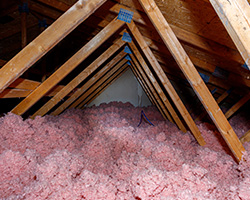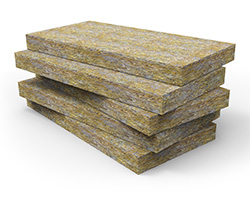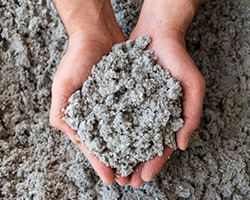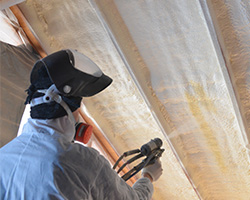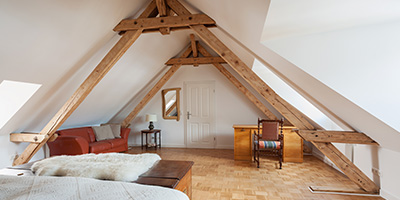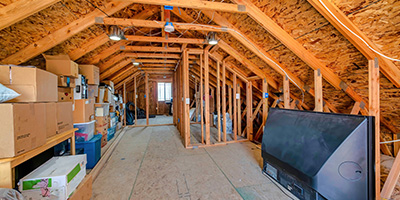How to Choose the Best Insulation for Your Attic

Best Types of Attic Insulation
Do you notice every draft and find yourself feeling chilly even when the weather is moderate? 90% of U.S. homes are under-insulated, and yours might be one of them.
With home energy costs expected to increase by more than 35% in coming years — and home heating costs already at a 10-year high — the time for DIY attic insulation is now. Not ready to tackle the project yourself? You can also hire a professional to get the job done.
Why Adding Insulation to Your Attic Matters
Without proper insulation, your attic is similar to a leaky pipe, letting valuable energy seep from its cracks and crevices. When you add insulation — or fix up insulation that’s already there — you can stop the energy leak that’s driving up your energy bills.
You can save an average of 15% on your heating and cooling costs just by air sealing your home and adding insulation to strategic areas like your attic. Along with making your home more energy-efficient, insulation provides a number of additional benefits, including:
- Reduced noise
- Improved humidity control
- Less pollen, dust and insects in your home
- Lower chance of ice dams on your roof (in snowy areas)
Having the right insulation for your attic makes it easier to maintain the temperature throughout your home and stay comfortable year-round. Adding certain types of attic insulation is also a cost-effective home improvement, offering an average 117% return on investment in the form of increased home value. In other words, when you choose the right insulation for your attic, it’s likely to make your home worth more money.

“The right attic insulation is crucial to your home's overall comfort and efficiency. It acts like the down stuffing in a winter coat. It works to keep the air you pay to heat and cool inside your home, and that helps you cut down on energy waste and makes your home feel better year-round. But it does more than that, too. Sufficient and correctly installed attic insulation can help your roof last longer (because it helps prevent ice dams) and even reduce excess outdoor noise — helping you sleep.”
The Home Experts at Sealed
There are also potential tax credits available when you add adequate insulation to your attic, along with state and local utility incentives and rebates you may qualify for. All considered, it’s easy to see why insulating your attic makes sense. If you have drafty rooms, hot or cold ceilings and high energy bills, your attic is likely in need of new, or better, insulation.
Planning an attic remodel? Get our complete guide to finishing your attic.
Why Attic Insulation R-Value Matters
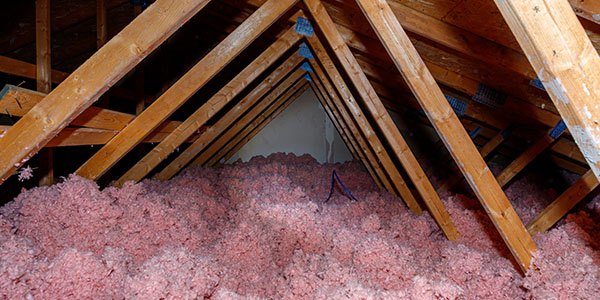
What Is R Value?
The “R” stands for “resistance,” and R-value measures how resistant the insulation is to heat traveling through it. The higher the R-value, the better the insulation performance — and the greater your energy savings.
The recommended R-value for your home depends on where you live. Most living in Southern climates should strive for at least R-38, with insulation being about 13 to 14 inches deep. In Northern climates, the recommended R-value is R-49, with insulation 16 to 18 inches deep.
For comparison, a poorly insulated older home may have R-15 insulation that’s only four or five inches deep. The most efficient insulation depth also depends on the type of attic insulation you choose.
According to Stefan Schulz of Attics & More, who has 10 years of experience in the attic insulation, ventilation and air sealing space, “If you fail to evaluate things like application type and R-value, your attic insulation might not work as well as you hoped. This can result in wasted time and effort, plus unnecessary expenses to replace the insulation with the proper products.”
Before you decide on the best insulation for your attic, it’s important to understand how much insulation is necessary for your home. One size does not fit all when it comes to attic insulation. The right amount for your home depends on a number of factors, including the climate where you live and the age of your home. This is where R-value comes in.
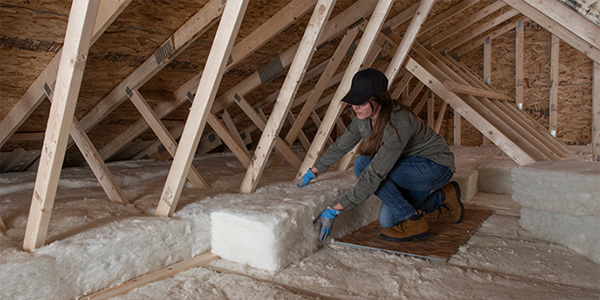
Attic Insulation Costs: What to Expect
The cost to insulate your attic depends on a number of factors, including the square footage of your attic, type of attic insulation you choose and whether you plan to DIY your attic insulation or hire a professional. Generally, you can expect to pay between $1 - $7 per square foot, inclusive of labor and materials.
If you have a small attic, the entire project may cost you around $500, while a large attic insulation project may cost $4,000 or more. To break it down further, fiberglass may cost as low as $0.35 per square foot while spray foam insulation can cost $4.50 per square foot or more.
Labor costs for installation must also be factored in if you’re hiring a contractor. Expect to pay about $1.50 to $3.50 per square foot for a professional to install your attic insulation.

Wondering if DIY attic insulation is right for you?
“Insulating an attic properly is a messy, time-consuming job. An experienced DIYer could certainly get the job done, but there are some advantages to hiring a professional that need to be considered. One advantage of using a certified insulation contractor is that they can properly inspect an attic using a variety of tools.
For example, thermal imaging cameras provide insight to a number of other variables that could impact the overall job. Will the attic need to be air sealed first? Are there ventilation issues that should be addressed? These are common problems that a certified insulation contractor will be able to identify.”
Stefan Schulz, Senior Editor at Attics & More
When you hire a professional, you’ll also get a warranty if any problems should arise. “This provides a level of protection that a homeowner would not have if they did the job themselves,” Schulz shares. But he noted that if you’re up for a challenge, you can certainly save some money by doing it yourself. The experts at insulation manufacturer Johns Manville agree.

“In general, installing loose-fill fiberglass in your attic is relatively simple. One should be able to easily purchase insulation and rent an installation machine from most big box stores. And while it is a two-person job, the basics are straightforward; one person loads bags into the machine, which is often located outside or in a garage, while the other person holds the end of a long hose in the attic space installing the insulation. Some prep work is required, like properly addressing electrical boxes, light fixtures, flues and chimneys, proper ventilation and, ideally, air sealing, but this is all manageable for a DIY homeowner. That said, there many high-quality insulation contractors that can do the work for you while ensuring proper safety and code requirements are being met, so the choice is up to the homeowner as to which method is best for them.”
Eric Dake, Senior Product Manager, and JR Babineau, P.E., Research Manager – Building Sciences, at Johns Manville
If you currently have insulation that needs to be replaced, you’ll also need to factor in an additional $1 - $2 per square foot for attic insulation removal. According to Schulz, “In some cases, it may be necessary to remove old insulation before new insulation can be added. This is another situation where a professional would likely be needed. Not only is removing old insulation a dirty job, but it can also be dangerous if the insulation contains asbestos.”
To achieve the highest level of energy savings and comfort, a complementary element to consider is air sealing.

“Most insulation DIYers miss a very crucial step: air sealing. Air sealing your attic — and other key parts of your home, like your foundation, windows and crawl space — should be part of the process. If you don't get the draft reduction that you hope for after upgrading your insulation yourself, later on, a professional will likely need to remove all the incorrectly installed insulation and air seal your attic before installing fresh insulation. Whole house air sealing is an essential part of correctly insulating your attic and making your home more comfortable and efficient. Make sure whoever you hire to upgrade your attic insulation also air seals at the same time.”
The Home Performance Experts at Sealed
Comparing the Four Main Types of Attic Insulation
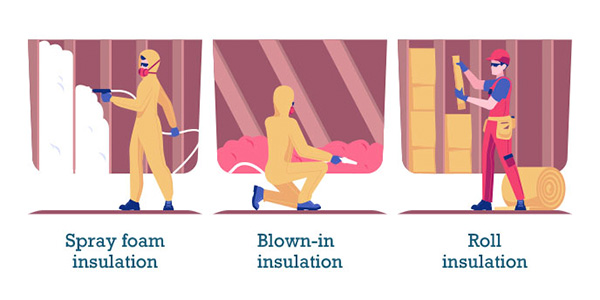
There are many options for insulating your attic, with pros and cons to each. The best insulation for your attic depends on your project goals and budget. In addition to type, insulation is available in different forms, including batts, rolls and loose-fill, also known as blown-in attic insulation. Batts and rolls are a “blanket” of insulation that may be made of fiberglass, mineral wool or other materials.
While batt insulation comes in pre-cut panels, roll insulation must be cut to fit your area. Blown-in attic insulation may be made of cellulose, fiberglass or mineral wool. It’s blown into the space, making it useful for filling in gaps and hard-to-reach areas. However, due to its loose-fill nature, it may settle over time.

“Choosing the right attic solution to meet your goals is critically important. Two of the most common attic insulations are cellulose and loose-fill fiberglass, each of which have different characteristics. For example, if fire performance is important, fiberglass is naturally non-combustible and is likely the better choice. Also, since cellulose requires chemical treatment to make it non-combustible, many people will choose fiberglass to reduce the amount of chemicals they could potentially be exposed to.”
Eric Dake, Senior Product Manager, and JR Babineau, P.E., Research Manager – Building Sciences, at Johns Manville
Here’s a breakdown of the four most common options if you’re considering adding insulation to your attic.
Type of | What Is It? | Benefits | Drawbacks | Avg. Cost per Sq. Ft. |
|---|---|---|---|---|
Fiberglass | Glass cullet and other materials are melted and spun into fibers. It’s available in batts, rolls or loose-fill forms. |
|
| $0.30 – $1.50 for batt |
Mineral wool | Also known as rock wool, this insulation is made from rock or blast furnace slag that’s melted and spun into fibers. It’s available in batts, rolls or loose-fill forms. |
|
| $1.40 – $2.10 for batt |
Cellulose | Made from cellulose fibers derived from paper, paperboard stock or wood, cellulose is chemically treated to be fire-resistant. |
|
| $0.60 – $2.30 |
Spray foam insulation | This chemical-based insulation is mixed on-site to create a foam that’s sprayed into attics and other spaces. |
|
| $0.50 – $4.50 |
You may have also heard about reflective attic insulation. This refers to radiant barriers that are usually installed in attics to reduce cooling costs in the summer. Unlike thermal insulation materials, reflective attic insulation does not reduce heat conduction. Instead, it reflects radiant heat, which is especially useful in hot climates. If you live in a cooler climate, thermal insulation is typically a more cost-effective option than reflective attic insulation.

“Based on our experience, and wide testing, we love working with loose-fill fiberglass attic insulation. This type of attic insulation easily fills wall cavities and oddly shaped areas, as it doesn’t come in pre-cut dimensions. This makes installation fast and easy and ensures that all of the gaps and cracks in an attic are filled properly. The only drawback is that it does require an insulation blower, which can either be rented by homeowners or purchased by contractors.”
Stefan Schulz, Senior Editor at Attics & More
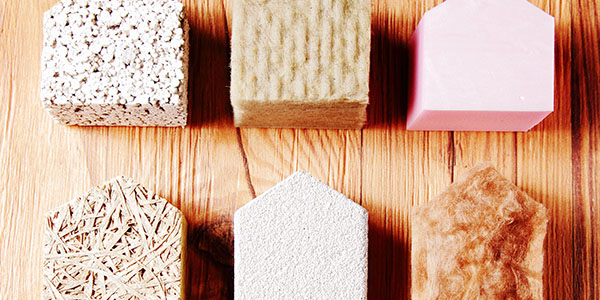
What Is the Best Attic Insulation?
There’s no right or wrong answer when it comes to choosing the best insulation for your attic. The right choice for you will depend on your budget, your attic space and whether you’re planning on DIY attic insulation or hiring a professional. Depending on your project, you may even need to use more than one type of insulation for your attic.

“Each home is unique, so while there are plenty of excellent insulation options out there, each house requires a custom approach and consideration of the house's attic itself… sometimes that requires a combination of insulation materials. Spray foam insulation is highly sought-after due to its ability to both air seal and insulate your attic at the same time, and it has a long lifespan. However, we often use and recommend cellulose as well. Blown-in cellulose can fit into nooks and crannies in your attic, is made from recycled and fire-treated materials, and it isn't something pests like to snack on (like pink fiberglass insulation, which mice and squirrels love). Invest in a durable, reliable material that you're comfortable with that provides the necessary R-value you need for your local climate.”
The Home Performance Experts at Sealed
In the U.S. Centers for Disease Control and Prevention (CDC) Healthy Housing Reference Manual, they state that cellulose and fiberglass insulation are the most cost-effective options. Loose-fill cellulose or fiberglass and fiberglass batts have similar costs and performance. The CDC recommends ensuring your insulation is five inches to six inches thick.

“Fiberglass and cellulose are two of the most common types of attic insulation, but there are also a number of green options available that use recycled materials. Ultimately, the best attic insulation for your home will depend on a variety of factors. But by taking the time to do your research, you can be sure to choose an option that will provide superior energy efficiency and year-round comfort.”
Stefan Schulz, Senior Editor at Attics & More
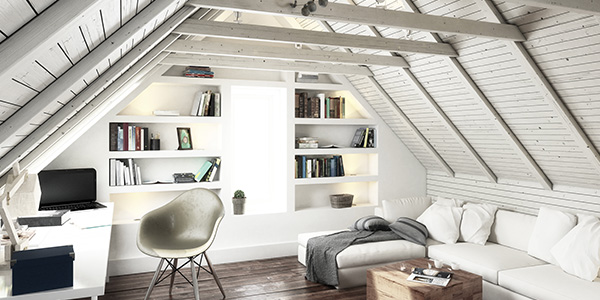
Insulating Your Attic for a Warmer, Less Expensive Winter
Adding insulation to your attic will not only keep you cozy when temperatures drop but will also help you stay cool in the heat of summer. Both your thermostat and your wallet will thank you.
That’s the beauty of proper insulation for your attic. Whether you choose fiberglass batt, blown-in attic insulation or another variety, you’ll be more comfortable in your home while saving money year after year. While insulation for attics doesn’t get the recognition of flashier projects like kitchen and bathroom remodels, it’s one of the smartest home improvements any homeowner can make.

